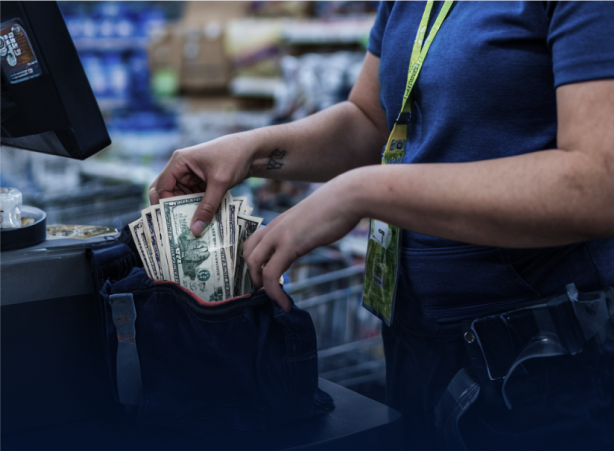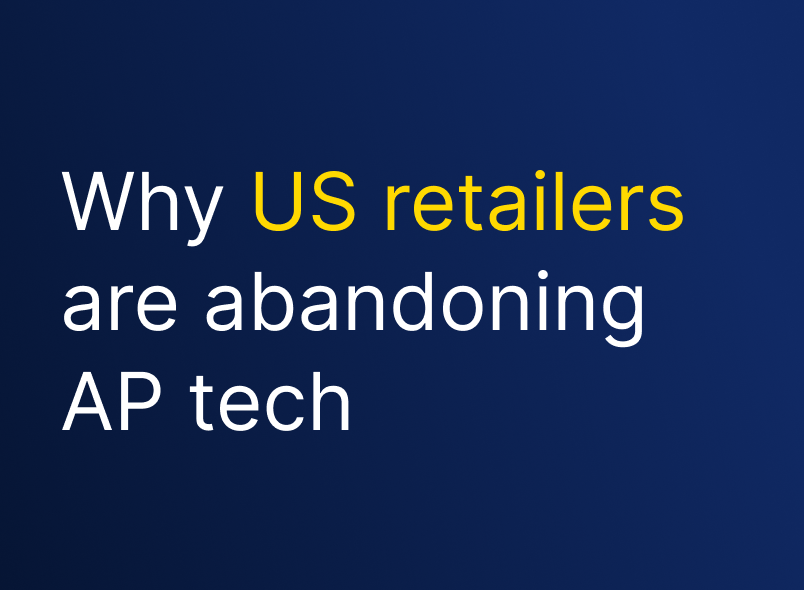With online shopping more common than ever before, it makes sense so many retailers have been focusing on their online experience for customers.
It turns out, though, that what consumers want the most from retailers is convenience, and an exceptional online shopping experience on its own is not enough. This is particularly true now that more people are returning to brick-and-mortar stores and engaging in other pre-pandemic activities.
In this article, we explore what retailers need to do to win customers and retain loyalty, and why the success of retail rests in the capable hands of AP/LP teams.
The pandemic effect on customers and convenience
As people around the world were forced out of their daily routines by a global health crisis, it became more evident how important convenience was. With people not being able to leave their homes without restrictions, retailers needed to focus on convenience to help make consumers’ lives easier in a time of uncertainty.
According to 2022 research, 70% of people surveyed said they would pay more if they knew the experience would be convenient. And 75% said they would switch companies if they found out a competitor was more convenient.
That convenience doesn’t end with a customer’s online experience, though. The competition for consumer dollars and loyalty means retailers need to be providing exceptional value to customers at every single interaction, especially when it comes to their in-store experiences.
Data shows there are a significant number of people who want a valuable in-store experience along with an online one. According to audience data and analytics firm Nielsen, 70% of consumers surveyed ordered items online and had them delivered to their homes prior to the pandemic. By June 2021, that had increased to 77%.
However, the most popular way for consumers to shop was through in-store shopping. Nielsen’s data shows that 78% of consumers shopped in-store before the pandemic and by June 2021, that had increased to 82%.
“We’ve seen firsthand how important convenience has become for people and how crucial the in-store experience is to providing that customer convenience. Retailers are doubling down on offering exceptional in-store experiences, with some spending billions of dollars a year on providing the best possible experience. And they’re seeing that investment pay off, with some dramatic increases in sales as a result.”
– Bobby Haskins, VP of Retail Partnerships at Auror
Before looking at how AP/LP comes into this, we need to understand how retail crime stands in the way of retailers being able to offer customers a convenient experience.
How retail crime and ORC impact the in-store experience
Retail crime isn’t a new phenomenon, but the pandemic greatly accelerated incidents of crime and the activities of crime groups in retail stores.
The National Retail Federation reports Organized Retail Crime (ORC) rose 60% between 2015 and 2021, and almost 70% of retailers reported an increase in ORC in 2021. In a crime survey conducted by the British Retail Consortium, violence and abuse against retail workers tripled in 2020 and 2021.
Retailers have reported increasing the cost of their items, closing stores, and locking items behind glass in attempts to mitigate the effects of crime. In findings by the US Chamber of Commerce, 46% of small retailers were forced to increase their prices between 2021 and 2022 as a result of shoplifting. Half of the retailers surveyed said the issue had worsened over the course of a year.
None of this bodes well for the customer experience. Not only do crime and aggression make it dangerous for customers to shop in-store, but they are also confronted with empty shelves and products secured behind walls of glass that only staff can access. When it is no longer a safe, seamless, and personalized in-store experience, people turn to other options that fulfil their desire for convenience.
This is where the work of AP/LP teams becomes crucial.
The link between AP/LP and customer convenience
AP/LP teams can make or break the future of retail stores through the work they do every day. The most successful teams are the ones that use technology to stay ahead of the people causing harm in their stores, and to empower their entire team to prevent crime, loss, and harm.
Furthermore, with retailers spending so much money on innovating their in-store experiences, it doesn’t make sense to allow people who offend to continue causing loss, and disrupting the experience for genuine customers.
AP/LP practitioners around the world are discovering the power of Retail Crime Intelligence (RCI) and how effective it can be in reducing crime and aggression in stores. RCI is a proactive solution that uses technology and timely intel to reduce the impacts of retail crime.
Our numbers indicate that 10% of people who offend are responsible for about 90% of unrecovered loss from retail stores. That means without the right tools and information, AP/LP teams are missing who those people offending are, where and when they are offending, and what they are doing. They don’t have a good understanding of who is causing them the most harm, leading to solutions like price hikes and locking stock away. By trying to deter crimes in this blanket way, retailers are also punishing their good customers.
Instead, teams that use Retail Crime Intelligence-driven solutions have insight into who is causing them the most harm, where they are the most active, and when they are likely to strike. Here’s how:
#1 Remove anonymity and connect the dots
Teams utilizing RCI are able to identify the people causing the most harm and connect the dots between people, incidents, and vehicles.
Identification and connecting the dots creates a network of collaboration and sharing, which is something you don’t get with traditional approaches that focus more on case management, rather than prevention. This removes the anonymity that people who offend rely on to commit crimes and to profit without consequences.
#2 Increase reporting
RCI empowers everyone in a retail team — from the AP/LP leaders to store staff — to report incidents and the people involved quickly and accurately. By being able to focus on the individuals causing the loss and harm, rather than just the event, teams are able to remove their anonymity.
Reporting through an intelligence platform, as opposed to writing information down or typing it out onto a spreadsheet, also cuts the time needed to report incidents down significantly.
Based on Auror’s data, retailers see a 300% average increase in reporting by teams once they switch to Retail Crime Intelligence.
#3 Timely alerts
An alert system notifies other team members, retailers, and law enforcement in the same network whenever a known person of interest enters a store or parking lot. This gives teams time to decide how they will deal with the person without putting their staff and customers at risk.
#4 Helping law enforcement to help you
Better crime reporting and gathering of information lead to better outcomes with law enforcement, too. Retail Crime Intelligence gives police the evidence they need to arrest and charge people, without spending countless hours gathering the footage and statements they need to take action under the law.
By proactively preventing crimes and getting the people responsible out of stores, AP/LP teams are helping to create better, safer, and more valuable customer experiences in-store.
How retailers are winning with Retail Crime Intelligence
Here are some of the ways our North American retailers are able to offer better customer experience through the use of Auror’s platform.
- One retailer has saved $127 million from their bottom line in prevented loss, as well as returned over 11 million products to their shelves. It would take an additional $2.5B in sales to make up for these losses.
- This same retailer has saved $12.5m in hourly wages from saving time on incident reporting. The ease of reporting on Auror has allowed teams to focus on actually preventing loss rather than reporting it.
- Another retailer has seen their shrink improve by 20%, allowing them to reduce the prices increases to their customers.
- Yet another retailer closed 80% of their ORC investigations in under 40 days. Additionally they $26m worth of cases due to leveraging police partnerships.
How AP/LP is defining the future of retail
Convenience is more important to customers than ever before, and the key for retailers is to provide value to their customers wherever they are, especially through in-store experiences.
This is threatened by increasing retail crime and aggression, but AP/LP teams have the power to stop this trend through the use of technology and Retail Crime Intelligence. Through the work they do everyday, and empowering other team members to report crimes and collaborate, they can ensure and define the future of retail.
“At Auror we’ve seen firsthand the positive outcomes that come out of using the right tools and empowering your whole team with timely and relevant information. Right now, we’re seeing the time between when a person commits a crime in-store to when they are charged decrease significantly — taking only days and weeks, rather than months or even years in some cases. The faster and more efficiently retail teams can get these people out of their stores for good, the better the customer experience.”
– Andrew Kouimanis, VP of Partnerships and Innovation at Auror
Interested in more talk around the future of retail? Read, watch, or listen to this podcast about connected ecosystems.






.png)
.png)